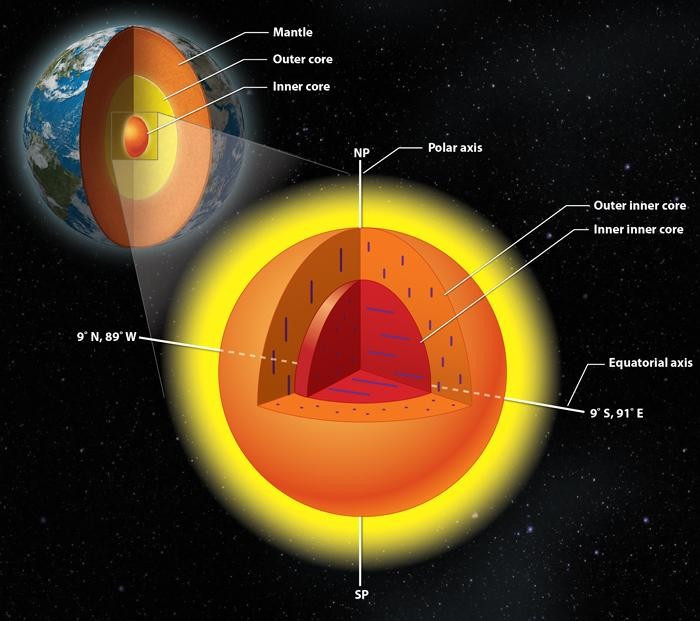Earth's inner core reveals another core inside with unique properties

The Earth's inner core has a core, smaller than the moon, but with surprising properties that indicate it could even be made of a different material.
The core was once thought to be a solid ball of iron. And the Earth was believed to be made of a crust, mantle, outer core and inner core. One more component has been added to that now.
Using seismic waves, a research team at the University of Illinois and colleagues at Nanjing University in China could see a distinct inner-inner core, about half the diameter of the whole inner core.
Where the iron crystals in the outer layer of the inner core are aligned directionally, north-south, in the inner-inner core, the iron crystals point roughly east-west.
Besides the different alignment, the iron crystals behave differently from their counterparts in the outer-inner core suggesting it is made of different materials or at least a different phase of the crystal.
"Even though the inner core is small – smaller than the moon – it has some really interesting features," said Xiaodong Song, a professor of geology at the U of I who led the study. "It may tell us about how our planet formed, its history, and other dynamic processes of the Earth. It shapes our understanding of what's going on deep inside the Earth."
The team used a technology that gathers data from the waves that resonate in the aftermath of earthquakes.
Scientists have used the difference in the timing of when the shock waves reach detectors on the surface to define the boundary layers between the core, mantle and crust.
The speed of the waves as they move through regions of varying densities (solid rock vs molten rock vs liquid iron vs solid iron) and the bouncing of waves when they encounter boundaries was used to deduce the Earth's constitution.
In the present study they examined the vibrations and resonances that pass through the Earth from the start of the quakes until they completely die down - the quakes' coda.
"The fact that we have two regions that are distinctly different may tell us something about how the inner core has been evolving," Song said.
"For example, over the history of the Earth, the inner core might have had a very dramatic change in its deformation regime. It might hold the key to how the planet has evolved. We are right in the centre – literally, the centre of the Earth."
The team has published its work in the journal Nature Geoscience.
The US National Science Foundation and the National Science Foundation of China supported the work.
© Copyright IBTimes 2025. All rights reserved.





















